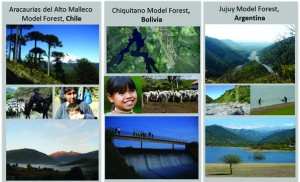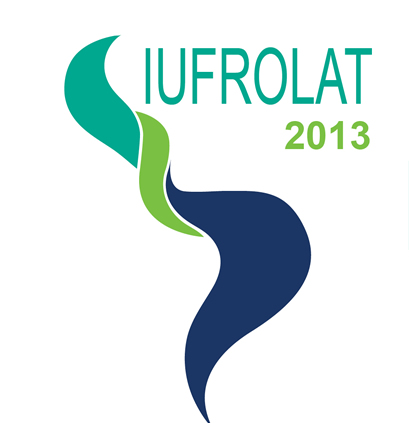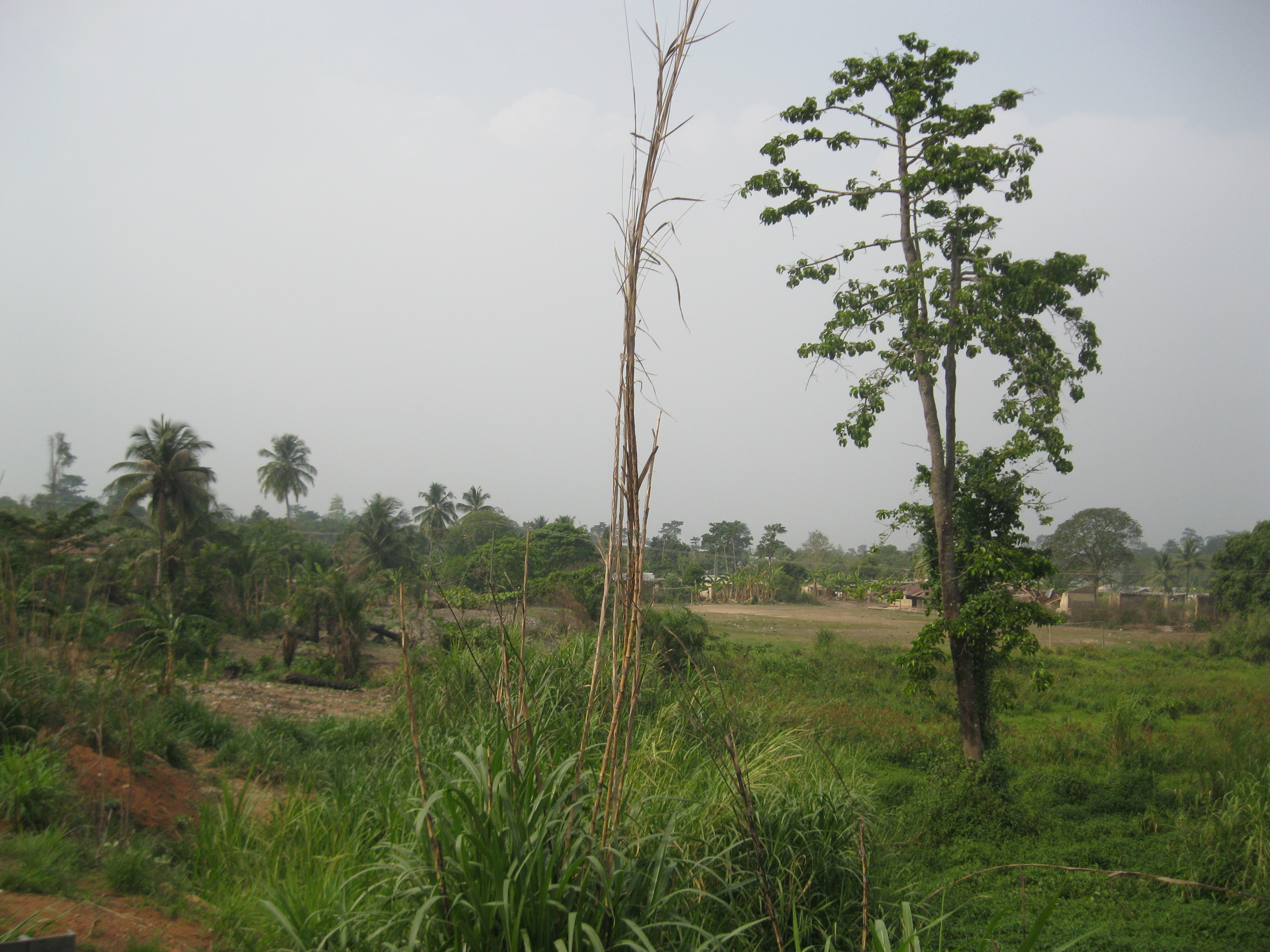IUFRO Spotlight #44 – Evidence linking community forest rights and improved forest condition inconclusive
There is an assumption that there is a correlation, possibly even a direct cause and effect relationship, between the devolution of forest governance and improved forest condition.
The United States Agency for International Development (USAID) was interested in testing that hypothesis to assess its impact on global climate change mitigation and adaptation.
To that end, a group of researchers at Michigan State University was tasked with reviewing, summarizing and commenting on the empirical evidence supporting that conclusion.
In their review of the literature, they found the assumption deserves, at best, a “maybe.” Read more…
IUFRO Spotlight #36 – Responses to climate change? All knowledge counts!
 EcoAdapt aims to enhance local communities’ engagement in innovative solutions to climate change adaptation.
EcoAdapt aims to enhance local communities’ engagement in innovative solutions to climate change adaptation.
The project, a joint undertaking by four research and five civil society organizations from Europe and Latin America, was initiated in 2012 and is being financed by the European Union for a four-year period.
Its overall objective is to develop ecosystem-based strategies for adaptation to climate change in three Latin American Model Forests – in Bolivia, Argentina and Chile. Read more…
Spotlight #35 – Cool it! Use Forest Landscape Restoration to Fight Climate Change

The stoplight tool is essentially a simplified presentation of complex restoration initiatives, and how they may contribute to climate change mitigation and adaptation and vice-versa, in a specific local context. (Image by Yougen/iStock)
Forest landscape restoration (FLR) can be a major weapon in the battle against climate change.
FLR can contribute to climate change mitigation and adaptation by increasing the productivity of landscapes and by enhancing the resilience of forest ecosystems and reducing the vulnerability of forest-dependent communities.
When one considers that about 25% of the world’s land surface is being degraded in one way or another and about 15% of that land surface is considered appropriate for forest landscape restoration, it underlines both the need for significant remedial action while, at the same time, pointing to a reasonable and beneficial way to achieve that restoration. Read more…
Bringing science to the people
How IUFRO’s Special Programme for Development of Capacities (SPDC) contributes to enhancing forest science communication within the framework of a Climate Change Adaptation Program in Bhutan.
Would you like to see your forest be wrapped up in plastic? Well, this is what Bhutanese society will witness due to a research project that aims at simulating drought, which may affect the region’s forests in the future as a result of climate change. In order to inflict drought stress on mature trees, entire research plots of considerable size have been covered with plastic roofs in about 2 m height above ground level, preventing rain water from reaching the soil and roots of trees. But would local people show understanding for such a measure and approve of it easily?
IUFROLAT III Keynote Address Highlights: Peter Holmgren, CIFOR
 Peter Holmgren, Director-General of the Center for International Forestry Research, presented his Keynote Address, “Forestry in a landscape approach – developing evidence-based policies”, during the final day of sessions of IUFROLAT III.
Peter Holmgren, Director-General of the Center for International Forestry Research, presented his Keynote Address, “Forestry in a landscape approach – developing evidence-based policies”, during the final day of sessions of IUFROLAT III.
Holmgren, presented a series of questions, framing a way forward to position forestry alongside that of other land users to address multi-sector problems in a landscape approach.
In his first question, “what are the policies we need?” he defined what shapes many of the forest policies, not only in Latin America, also on a global scale. These included poverty reduction, nutrition and food security, climate change adaptation and mitigation, preservation of biological diversity, and achieving green growth and equity. He outlined how forestry is related to 9 out of 12 sustainable development goals, and we need to think about where forestry can play a role in policies being politically relevant and providing positive contributions.
He transitioned by asking, “how does forestry contribute?” and presented his thoughts on how forestry is portrayed on increasingly large level. Forestry has become an environmental issue and forestry related questions are often blurred with perceptions of forests on a whole. Topics such as REDD, illegal logging, etc have brought attention to forests, yet fundamentally, they are not forestry issues. Holmgren proclaimed, “We need to take forestry out of the forest”. He explained how the adoption of a broader definition of the role of forestry, and how it applies to address key issues across a landscape, could be employed.
Expanding on this thought, Holmgren asked the question, “how is a landscape approach different?” In answer, he identified a sustainable landscape framework that focuses on objectives such as; ensuring livelihood provision, sustaining ecosystem services, securing food and non-food products, mitigating pollution and achieving resource efficiency. To do so, we need to see landscapes as a large part of sustainable development, identify multiple objectives and acknowledge that there are beneficial synergies as well as trade-offs. We need to build our work to ensure that local stakeholders are in charge and help strengthen the role of sectors to support them building a holistic landscape.
In order to provide this support, we must incorporate evidence-based approach in our science and policy interface. He answered his final question, “what is different about an evidence-based approach?”, by introducing new models that identified the importance of satisfying demand by stakeholders for information with relevant, credible forest science research.
Holmgren closed with some take home messages:
- It is time to take forestry out of the forest,
- We need a landscape approach to deal with sustainable development challenges; and
- Our plans for the future must be evidence-based.
Third IUFRO Latin American Congress IUFROLAT III

12-15 June 2013
San José, Costa Rica
Congress website: http://www.web.catie.cr/iufrolat/Iufro_ing.htm
This blog will present highlights and impressions from IUFROLAT III, the Third IUFRO Latin American Congress which starts today in the city of San José, Costa Rica and will run until Saturday, 15 June 2013. The Congress has been organized together with CATIE, the Agricultural Research and Higher Education Center, RIABM, the Iberoamerican Model Forest Network, FAO and several IUFRO members in the region. The overall theme of the Congress is “Forests, competitiveness and sustainable landscapes” and one of its major goals is to place relevant science-based information at the disposal of decision makers.
With up to 600 expected participants, IUFROLAT III has exceeded all expectations and has outnumbered previous regional Congresses by far. This clearly shows the extraordinary interest and need of scientists in Latin America to share and exchange information on the issues that are high on the agenda in the region concerning forest and landscape management, ecosystem services and climate change adaptation and mitigation, among others. The Congress languages being Spanish, English and Portuguese will further contribute to ensuring an excellent exchange of knowledge and experience.
IUFRO is placing particular emphasis on strengthening forest-related research in regions. Regional congresses are aimed to promote quality research as well as maintain the momentum of IUFRO activities in the five-year periods between IUFRO World Congresses in a certain region.
The great success of previous regional congresses, especially the First African Regional Congress held in Nairobi, Kenya, almost exactly one year ago, have confirmed the great need for IUFRO’s focusing on defined geographic areas. The first two IUFRO Latin American Congresses in Valdivia (1998) and La Serena (2006), both organized by INFOR, the Forest Research Institute of Chile, and the European Regional Congress that took place in Warsaw, Poland (2007), are further excellent examples.
IUFRO Board Meeting
Right before the Congress, the IUFRO Board (http://www.iufro.org/who-is-who/board/) held its annual meeting and important issues concerning the future of the network, its leadership, venues of world congresses and strategic guidelines are on the agenda. The decisions made at this Board meeting will pave the way for the next Board term starting after the next IUFRO World Congress in October 2014 in Salt Lake City, USA (http://www.iufro2014.com/).
IUFRO-SPDC Pre-Congress Training Workshop: Communicating Forest Research – Making Science work for Policy and Management
San José, Costa Rica, June 9-11
Prior to the Congress, IUFRO’s Special Programme for Development of Capacities (IUFRO-SPDC), formerly known as the Special Programme for Developing Countries in coordination with CATIE, carried out a training workshop for early-career scientists from the Latin American Region to strengthen capacities and skills in forest science communication. The workshop brought together 16 participants from 11 regional countries.
One attendant, Eduardo Lopez Rosse from CIDES-UMSA and UMSS-Trópico, Bolivia, expressed his thoughts on the workshop. “The workshop was a great experience… I learned how to transmit scientific information outside the academic arena to other stakeholders, municipalities in my country, as well as to the general public.”
Another scientist, Mariana Moya, Extension Advisor at the Facultad de Agronomía, Universidad de Buenos Aires of Argentina had this to say, “We have a lot of people in Latin America working intensively with small farmers, with aboriginal communities, and we must communicate with governments, private companies, and different kinds of social organizations. It is helpful to me to see experiences from people who work in Brazil, Chile, Panama, and how they are communicating in their extension programs.”
The workshop which concluded today was an excellent demonstration of the SPDC’ capacity development efforts in building strengthened communication of forest research in a region.
It is important to note that IUFRO-SPDC through generous contributions by the Governments of Finland, Germany and the United States of America as well as the Center for International Forestry Research supports a total of 66 scientists in the framework of the Scientist Assistance Programme to attend the IUFROLAT Congress, bringing scientists who otherwise may not have had the opportunity to come to such an event.
Information about the Training Courses and IUFRO-SPDC:
http://www.iufro.org/science/special/spdc/
IUFRO Spotlight #8 – Combatting Climate Change Comprehensively
Combatting Climate Change Comprehensively
By Ben Chikamai (Kenya Forestry Research Institute)
IUFRO Board Member, Kenya

Degraded forest landscape in the Offinso District, Ghana. The original high forest cover has been modified through over-exploitation of wood resources, agriculture activities, and establishment of human settlements. (Photo by Ernest Foli, FORNESSA)
African forest policy makers and governments could benefit by using a recent study as a template to help bring climate change adaptation into the mainstream of national development strategies.
The study, conducted in two forest-dependent areas in Africa, emphasizes cross-sectoral planning – recognizing and incorporating interacting priorities, such as agriculture, health, forestry, land-use planning, water resources, energy, education, etc. – as a key element in implementing any effective climate change adaptation strategy.
Forests can play an important role in achieving climate change adaptation goals in Africa. But sustainable forest management decisions alone can’t accomplish that. Policy decisions – for forests as well as other resource areas – must complement one another. At present, impacts from some of those other sectors may actually be threatening the forests.
There are a number of pressures on Africa’s forests – agricultural expansion and forest over-use among them. Reducing non-climatic pressures, in a logical, prioritized manner, can help reduce the vulnerability of forest ecosystems. That’s crucial because many people in Africa are highly dependent on forest goods and services. Those people are, and will continue to be, particularly vulnerable to the impacts of climate change. Improving the capability of forest dependent communities to adapt to a changing climate will reduce that vulnerability.
The study: Enhancing Adaptation of Forests and People in Africa – Development of Pilot Cases for Selected Forest Ecosystems in Ghana and Malawi, examined forest issues related to climate change in selected areas of those countries. The authors, E.G. Foli and S. Makungwa, worked in those specific areas because they represent typical examples of the ecological and socio-economic situation prevalent in Sub-Saharan Africa, so the findings could also be applied to countries in West, Central, Southern, and parts of East, Africa.
Among other findings, the study confirmed a general trend of increasing mean annual temperatures and a decline in mean annual rainfall. In the Ghana pilot area this has resulted in forest loss due to wildfire; a decline in the availability of non-timber forest products; reductions in agricultural crop yields; and declining potable water supplies and the associated risk of water-borne diseases. In the Lake Chilwa area of Malawi, in addition to declining potable water supply and its associated disease risks, there has also been poor productivity on tree farms; loss of indigenous trees in communal areas, riverbanks and surrounding forest reserves; a decline in agricultural productivity; and declining fish catch from the lake.
While the study noted how changing climatic conditions can adversely affect livelihoods, health and food security in those communities, it also noted examples of locally initiated adaptation strategies developed to mitigate the impacts of the changing climate. By compiling existing information, including the needs of stakeholders in the various inter-related resource areas, consulting with local communities and assessing and evaluating each project site, enhanced and concrete adaptation measures for the pilot areas were developed.
Then, a priority setting exercise was carried out to identify appropriate and relevant adaptation strategies and activities that would best serve the communities. Similar techniques could be used across a much wider area, the authors say, but that will require political will, financial commitment, and an integrated multi-sectoral – even trans-national – approach. It’s a challenge, they agree, but one that must be faced.
The full study can be found at: http://www.fornis.net/content/enhancing-adaptation-forests-and-people-africa-development-pilot-cases-selected-forest-ecosy

